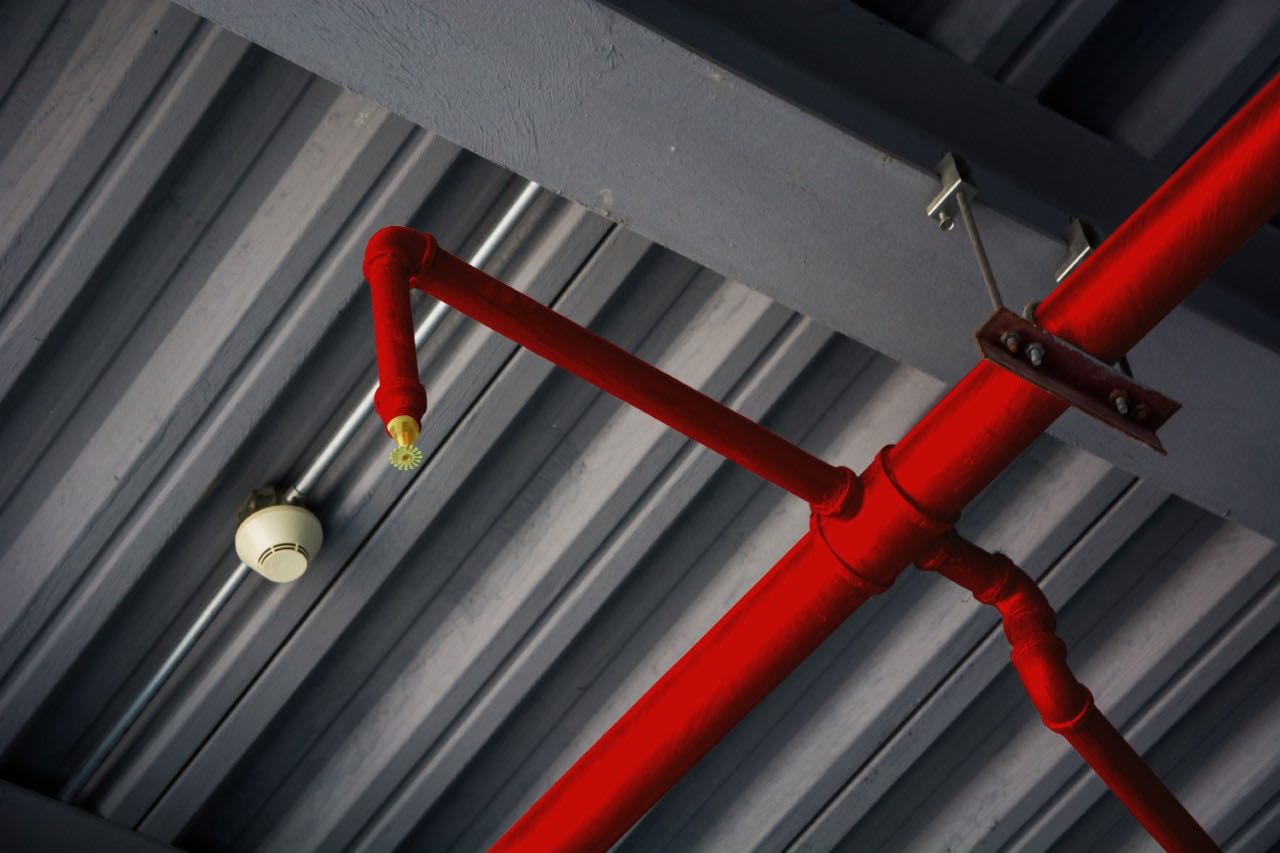Attaining a certain level of fire safety is a statutory requirement in building design – however, it is usually left up to the designer to decide what fire safety services and design features they use to achieve this. Standard fire safety guidance tends to indicate that there are concessions on other fire precautions when automatic sprinklers are incorporated, while fire engineering can be used to tailor fire protection measures to a specific building. The aim of this blog is not to discuss the fire protection benefits of automatic sprinklers or to talk about fire and life safety, but to discuss the ways that automatic fire sprinklers can add value to building design.
Automatic Sprinkler System Design & Operation
Automatic fire sprinkler systems work by controlling or extinguishing fires by discharging water locally, and detection is handled mechanically through heat-sensitive elements which are constructed from glass bulbs or soldered links containing oil-based liquids. Automatic sprinkler systems consist of water supply (tank, pump and valves) and sprinkler installation (pipes and heads) with the specifications of the design depending primarily on the hazard classification of the occupancy of the building.
There are three main design standards that cover automatic sprinkler systems, and these are:
- BS EN 12845:2015 – Fixed firefighting systems: Automatic sprinkler systems
- BS 9251:2014 – Fire sprinkler systems for domestic and residential occupancies
- LPC Rules for Automatic Sprinkler Installations 2015 incorporating BS EN 12845 (inc TB229)
Areas of Building Design Impact
Obviously, the installation of an automatic fire sprinkler system in a building can not only reduce the risk to life but also the degree of damage caused by a fire. Using automatic systems like this means that you can reduce other fire protection measures such as:
- Fire restraint construction
- Compartmentation (storage areas)
- Fire resistance of external facades and glazed elements (To prevent fire spread between buildings, a portion of the building’s facade should be fire-resistant)
- Fire-fighting access and facilities (buildings should be designed so that fire-fighting personnel have access without delay & with a sufficient operating base to allow effective action to be taken)
The degree to which these other measures can be reduced is based upon a variety of factors such as building size, building use and fire safety risk. The use of automatic sprinkler design allows for a little more freedom of design which can, in turn, create savings in capital costs, project lifecycle costs and throughout the construction programme as a whole.
Although this is a very brief look at fire sprinkler systems, as you can see it is very important to consider automatic sprinkler systems when designing buildings so that you can realise the added value and design options available when they are included
It doesn’t matter whether you are building an office, a warehouse or a home; life safety requirements are always required in order to meet building regulations. Automatic fire sprinklers can permit more freedom of design, reduce the overall cost of the building, offer more scope for the use of the building or allow for approval of a particular design.
If you have any questions regarding the impact of automatic fire sprinklers on the building design or would like to find out more about our fire protection services, please contact us on 0161 427 0348 or at office@thecadroom.com

